26 Wild Animals in Japan [Wildlife in Japan]
Want to know more about the wildlife in Japan?
Discover 26 wild animals in Japan in this post, as well as interesting facts about them. 🇯🇵
Learn All About Japanese Animals
Ready to learn all about Japanese animals?
I’ve always been fascinated by animals, and by how they can be so different from one country to another. In this guide, we’ll focus on the many animals Japan has on the land, in the sky, and underwater.
I’ve split the guide into 4 categories:
- Native animals from Japan
- Endangered animals of Japan
- What is the national animal in Japan?
- How many animals native to Japan?
Let’s dive in right away with our first category!
Native Animals from Japan
Japan is an Asian island country located in the eastern part of the continent, in the northwest Pacific Ocean. It is the eleventh-most populous country in the world, and it has a very important cultural influence in the world. It is surrounded by the Pacific Ocean, and its capital and largest city is Tokyo, which counts more than 13,988,000 inhabitants (but more than 37,468,000 if you include the metropolitan area, making it the first in the world!).
An interesting part of the country that I wanted to tackle is its wildlife. In light of that, I have listed the best of it, and I hope you will love learning what animals live in Japan.
Here’s the Japan animals list.
1. Ussuri brown bear
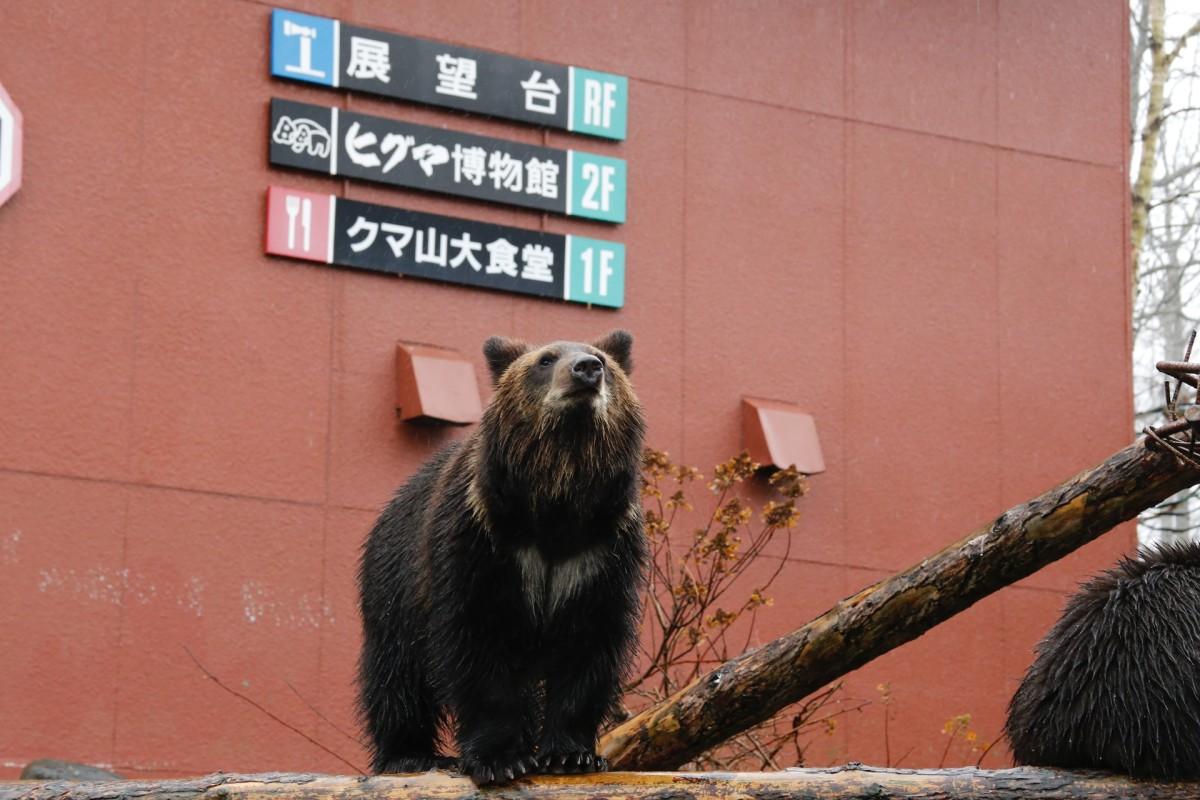
- Name: Ussuri brown bear
- Scientific name: Ursus arctos lasiotus
- Conservation status:
The Ussuri brown bear, also known as the black grizzly bear or the Ezo brown bear, is a subspecies of the Eurasian brown bear. It is one of the largest brown bears but is not the same subspecies as the grizzly bear, contrary to what its name indicates.
This brown bear can be found in Japan and is mainly vegetarian. However, due to its size, it can kill any prey in its habitat.
2. Japanese marten
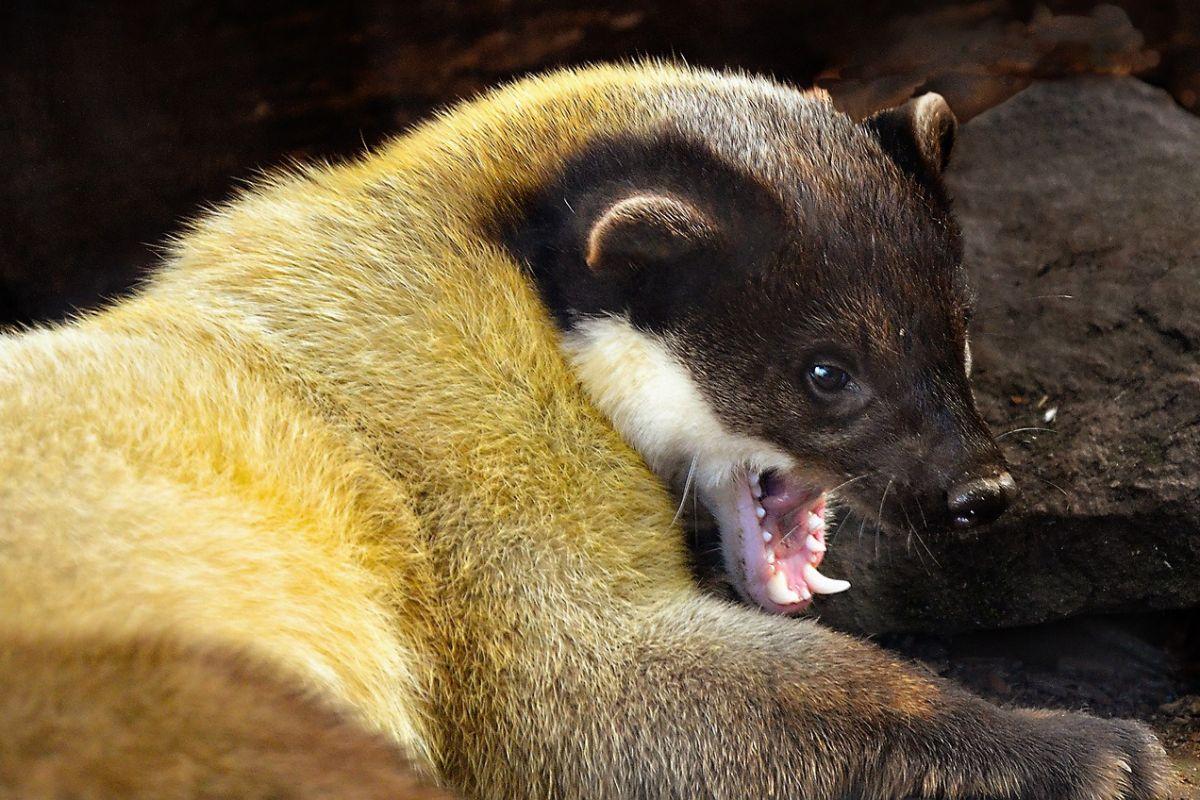
- Name: Japanese marten
- Scientific name: Martes melampus
- Conservation status:
The Japanese marten is a small species of mammal related to the sable. Its pelage varies from dark brown to dull yellow. Although mostly found in Japan, this marten was also spotted in the southern parts of the Korean Peninsula, but no native population has been confirmed so far.
This marten lives in boreal forests in most of Japan. It is very important for the environment, as it disperses seeds all around its territory.
3. Japanese serow
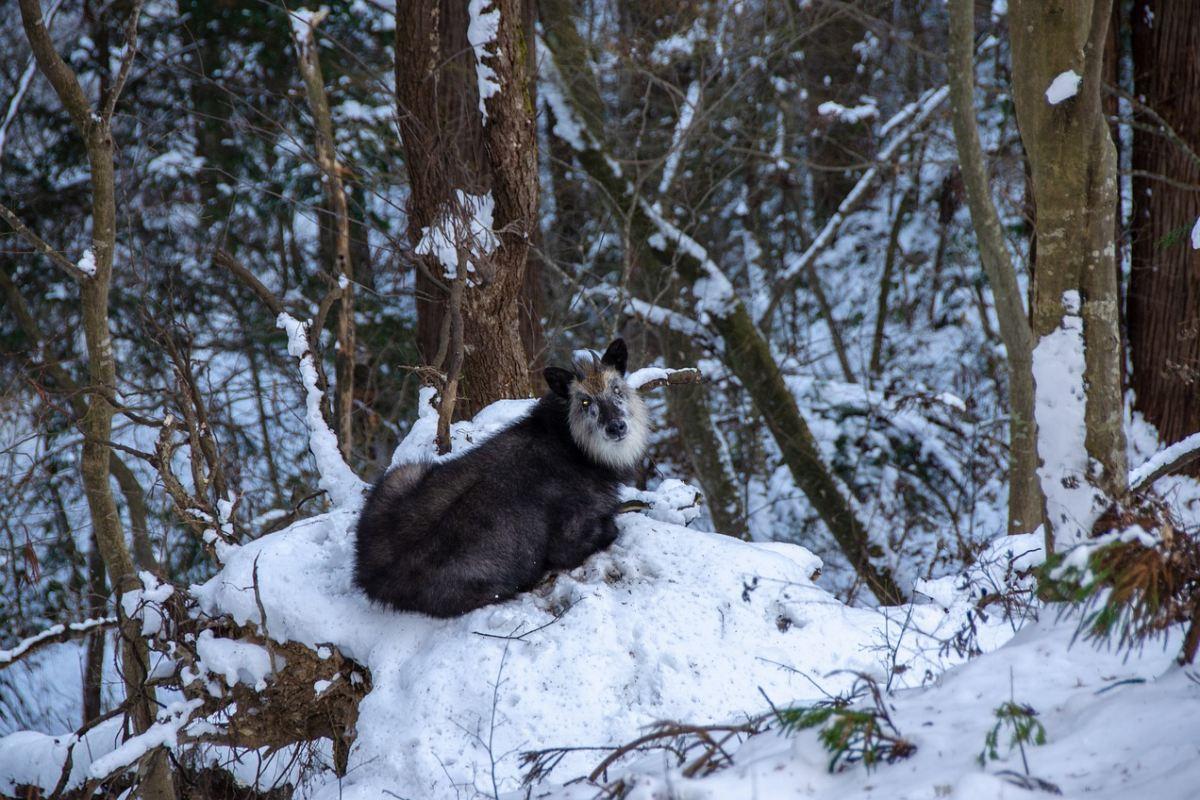
- Name: Japanese serow
- Scientific name: Capricornis crispus
- Conservation status:
The Japanese serow is a species of even-toed ungulate native to the dense woodland of Japan. Because it is a national symbol of the country (although not the official national animal), it is protected in multiple conservation areas.
This mammal was hunted to near extinction in the middle of the 20th century. Designated as a “Special National Monument” by the Japanese government, it is strictly forbidden to poach it.
4. East Asian finless porpoise
- Name: East Asian finless porpoise
- Scientific name: Neophocaena sunameri
- Conservation status:
The East Asian finless porpoise is a species of porpoise native to the Yellow Sea, the East China Sea, and the seas surrounding Japan. It can be found in shallow waters, up to 50 m / 160 ft deep, usually close to the shore.
This porpoise feeds on fish, squid, and shrimp, as well as octopuses and cuttlefish. Although it was never the main target of the whaling industry, its main threat is environmental degradation.
5. Leopard cat
- Name: Leopard cat
- Scientific name: Prionailurus bengalensis
- Conservation status:
The leopard cat is a small species of wild cat native to southern, southeastern, and eastern Asia. Despite being threatened by habitat loss and hunting in many areas of its range, it has been assessed as least concern thanks to its wide distribution.
This wild cat can be found in deciduous and coniferous forests at more than 1,000 m / 3,300 ft above sea level, with the highest recorded altitude at 4,474 m / 14,678 ft.
6. Sika deer

- Name: Sika deer
- Scientific name: Cervus nippon
- Conservation status:
The sika deer, also known as the Japanese deer or the spotted deer, is a species of deer native to most of East Asia and introduced to other areas of the world. Outside of Japan where it is overabundant, this species is quite rare.
While the sika deer is usually active by night, it is because of human disturbance; without it, this deer is active throughout the day and gathers in small groups with territorial males and their harems.
7. Green pheasant
- Name: Green pheasant
- Scientific name: Phasianus versicolor
- Conservation status:
The green pheasant, also known as the Japanese green pheasant, is a species of bird endemic to the Japanese archipelago. It is omnivorous and feeds on small animals, plants, seeds, and insects.
This pheasant is considered the national bird of Japan and can be found in a multitude of small islands. It lives in forest edges, woodlands, brush, parkland, and grassland. On the whole, its population is on the decline, it is not fragmented and the species is considered of least concern and can legally be hunted.
8. Black-banded sea krait
- Name: Black-banded sea krait
- Scientific name: Laticauda semifasciata
- Conservation status:
The black-banded sea krait, also known as the Chinese sea snake, is a species of venomous snake native to the warm waters of the western Pacific Ocean. It inhabits coral reef areas and is nocturnal.
Interestingly enough, because it is too slow, it can only hunt for fish hiding in the coral. Because it cannot breathe underwater, the black-banded sea krait surfaces every 6 hours at least. It is extremely dangerous, its venom being 10 times stronger than that of a cobra, but is usually not aggressive toward humans.
9. Japanese macaque
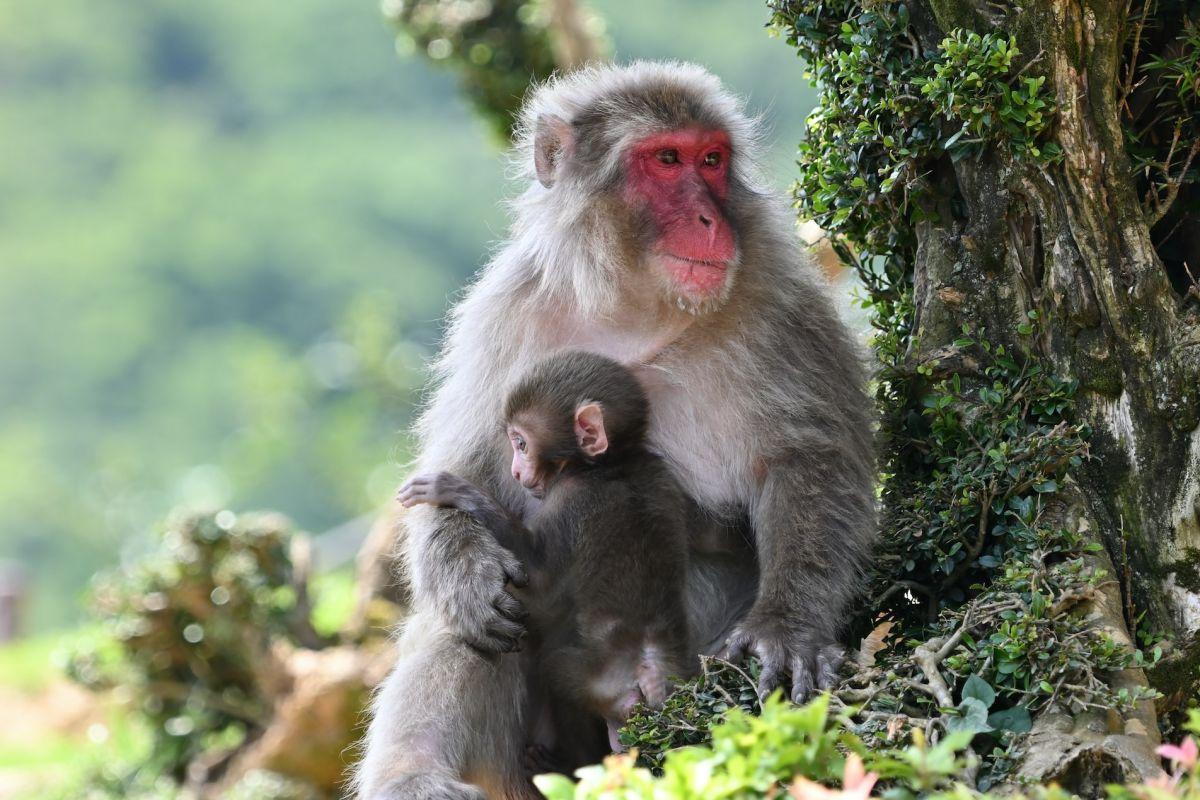
- Name: Japanese macaque
- Scientific name: Macaca fuscata
- Conservation status:
The Japanese macaque, also known as the snow monkey, is the world’s most northerly monkey and the national animal of Japan. It lives in matrilineal societies, where females stay in a single group their entire lives while males move out before becoming sexually mature.
This macaque often emits sounds when feeding or moving. They are used to keep the group together and to strengthen social relations.
10. Steller sea lion
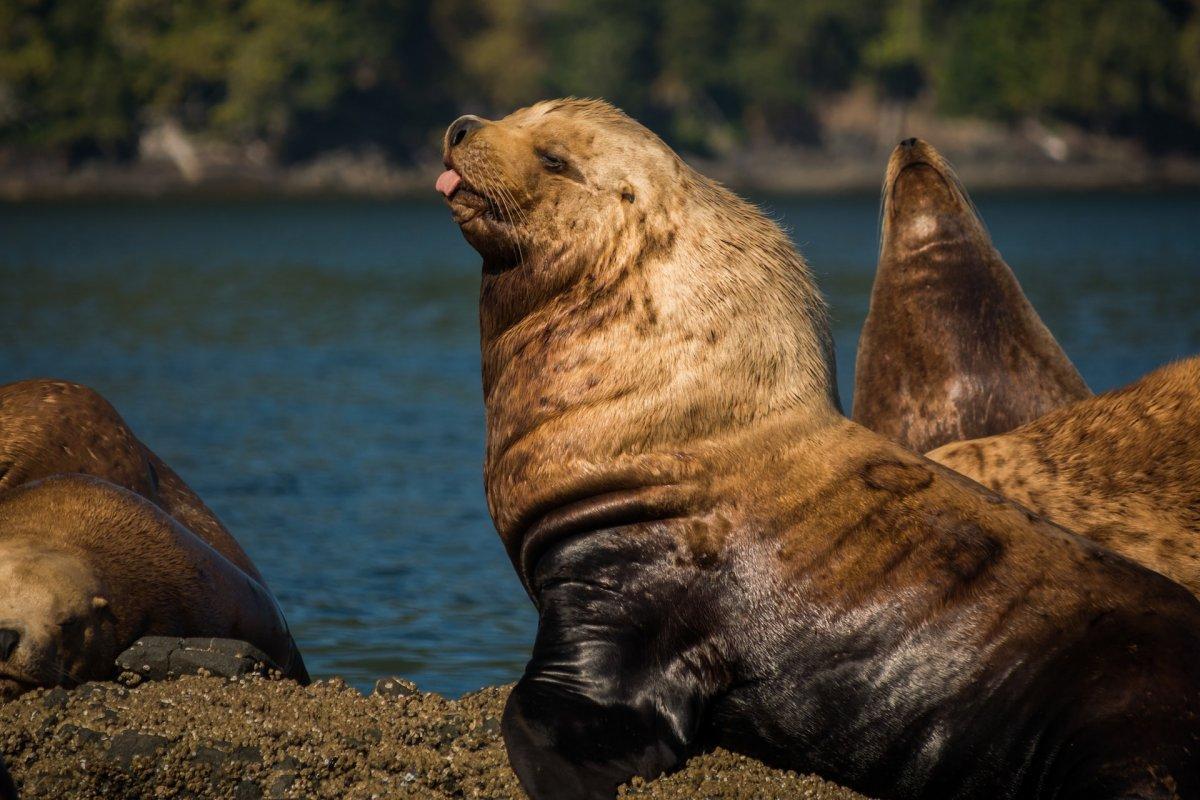
- Name: Steller sea lion
- Scientific name: Eumetopias jubatus
- Conservation status:
The Steller sea lion, also known as the northern sea lion or the Steller’s sea lion, is a species of sea lion that can be found in the northern Pacific. It is one of the largest pinniped species alongside the walrus and the elephant seal.
This large mammal was named after the naturalist Georg Wilhelm Steller and has been extensively studied in the past decades, experiencing serious and unexplained declines in numbers.
11. Dugong

- Name: Dugong
- Scientific name: Dugong dugon
- Conservation status:
The dugong is a species of marine mammal, and one of the members of the order Sirenia, with three species of manatees. Its range is very wide, as it can be found in about 40 countries throughout the Indo-West Pacific, from the Horn of Africa and the Red Sea to northern Australia and Japan.
This mammal has been hunted for thousands of years, and traditional hunting is still culturally important in many of the Pacific Islands.
12. Red-crowned crane
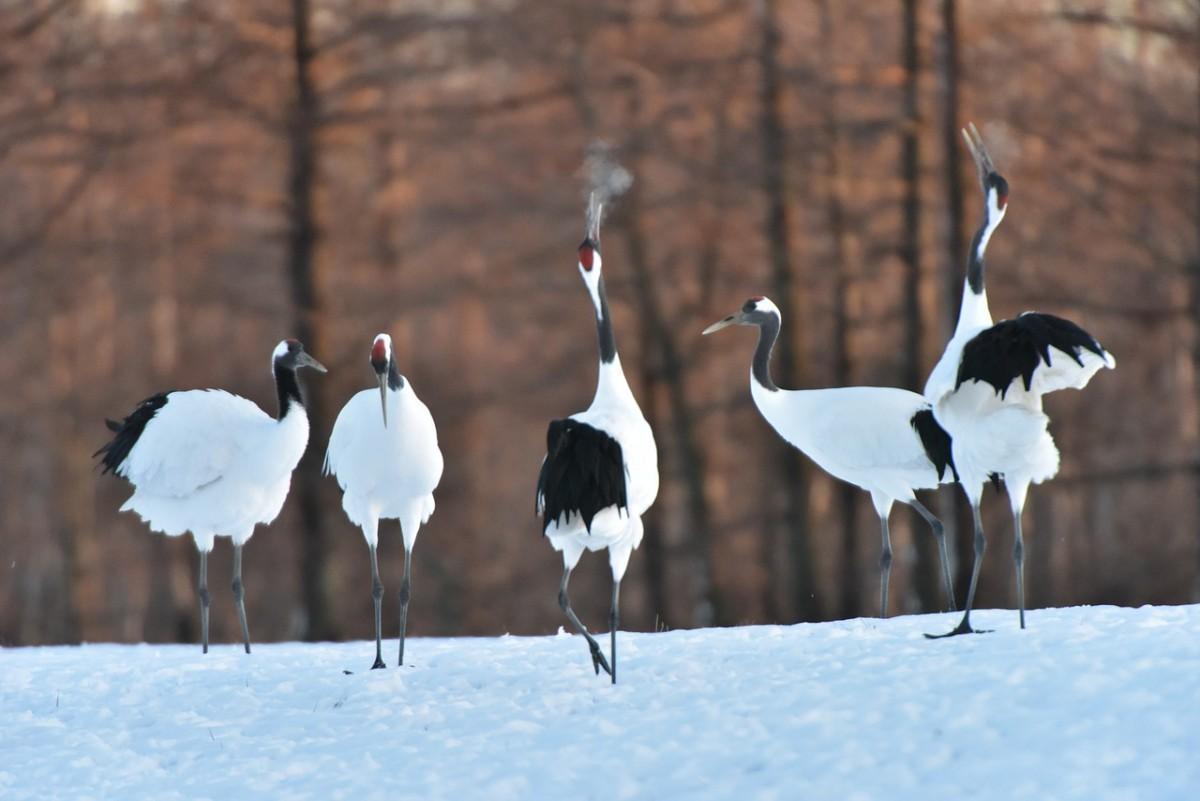
- Name: Red-crowned crane
- Scientific name: Grus japonensis
- Conservation status:
The red-crowned crane, also known as the Japanese crane or the Manchurian crane, is a large species of crane native to East Asia. It is one of the rarest cranes in the world and is seen as a symbol of luck, fidelity, and longevity in some countries.
This crane is said to live for a thousand years in Japan and has long been part of local culture. It is on the official logo of Japan Airlines and is reputed to fly high for miles and to mate for life.
13. Tiger keelback
- Name: Tiger keelback
- Scientific name: Rhabdophis tigrinus
- Conservation status:
The tiger keelback, locally known as the yamakagashi, is a species of venomous snake native to eastern and southeastern Asia. It is olive green, with bright orange spots on its body.
This snake mostly feeds on small vertebrates such as frogs and lizards and finds its prey thanks to its vision, smell, and tongue. Depending on the case, this snake will either passively defend itself by flattening its neck and body and lying still or simply flee.
14. Japanese giant salamander
- Name: Japanese giant salamander
- Scientific name: Andrias japonicus
- Conservation status:
The Japanese giant salamander is a fully aquatic species of salamander endemic to Japan. It is the third-largest salamander in the world, only surpassed by two Chinese giant salamanders. It is federally protected and was designated as a special natural monument.
This salamander lives in freshwater habitats, mostly in southwestern Japan. It is almost entirely nocturnal and has very poor eyesight, which it compensates for thanks to the many sensory cells all over its body.
15. Japanese flying squid
- Name: Japanese flying squid
- Scientific name: Todarodes pacificus
- Conservation status:
The Japanese flying squid, also known as the Pacific flying squid or the Japanese common squid, is a species of squid native to the northern parts of the Pacific Ocean, from Alaska and Canada to China, Russia and Vietnam.
It gets its name from the fact that it sometimes flies above the water, on distances as long as 30 m / 98 ft! In order to achieve that, it uses a unique jet-propelled aerial locomotion!
16. Asian giant hornet
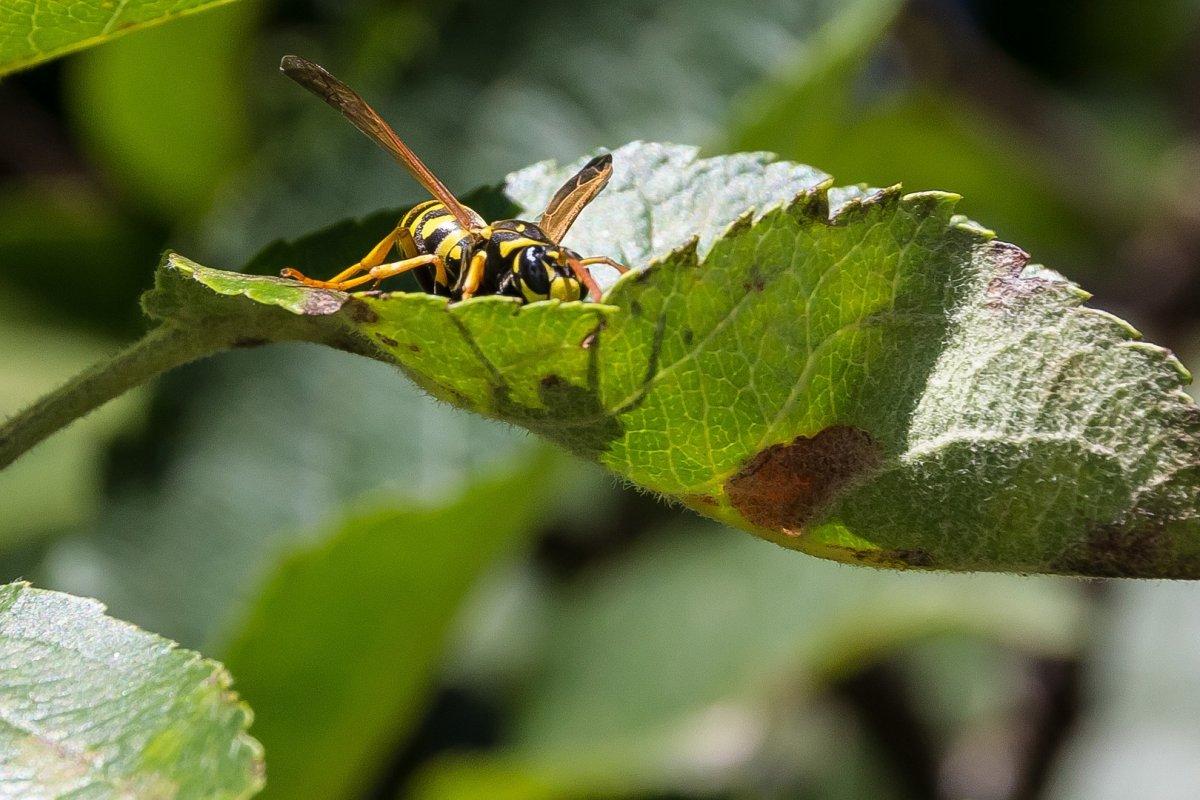
- Name: Asian giant hornet
- Scientific name: Vespa mandarinia
- Conservation status:
The Asian giant hornet, also known as the Japanese giant hornet, is the largest species of wasp in the world. It can be found in tropical and temperate parts of eastern, southern, and mainland Southeast Asia, as well as Russia and Japan.
Its diet is mostly made of other insects, tree sap, and honey. Its stinger is 6 mm / 1⁄4 in length and injects a large amount of dangerous venom.
17. Common raccoon dog
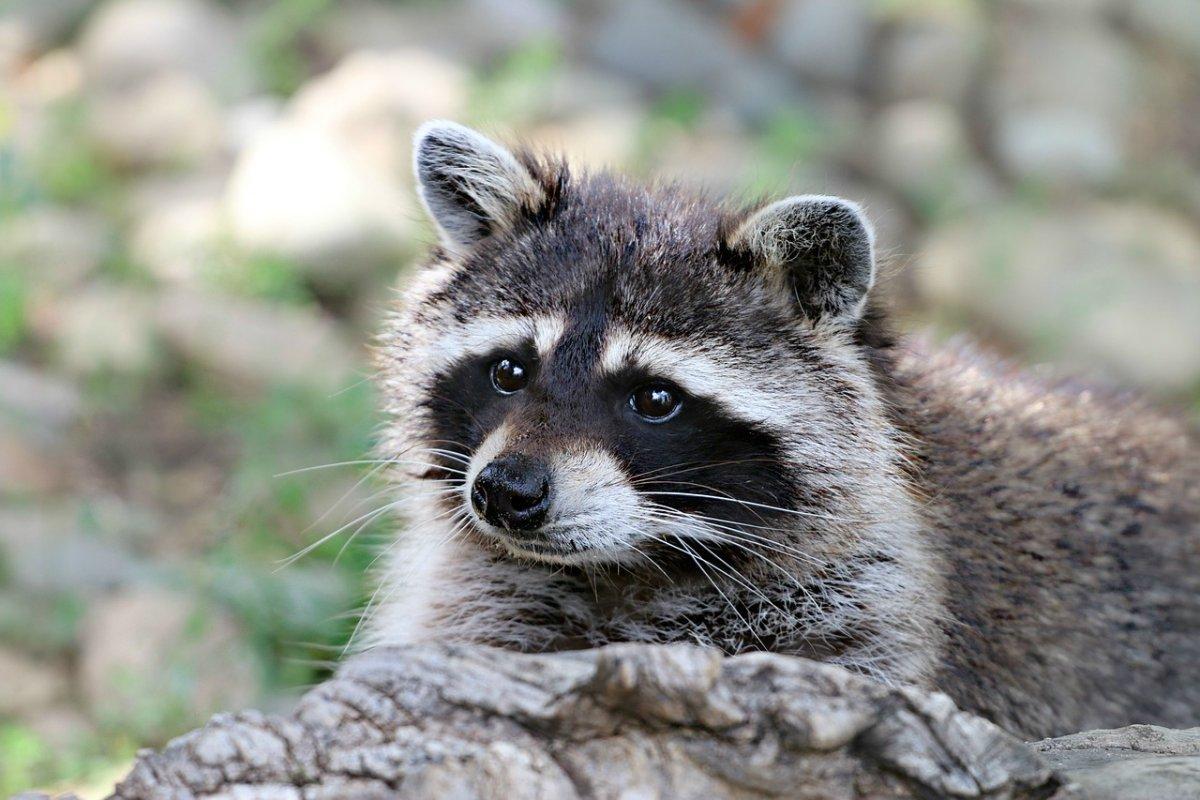
- Name: Common raccoon dog
- Scientific name: Nyctereutes procyonoides
- Conservation status:
The common raccoon dog, also known as the Chinese raccoon dog, the Asian raccoon dog, or the raccoon dog, is a species of canid native to eastern Asia and northern Vietnam. It has been introduced to much of Central and East Europe and into Russia.
Although it largely resembles the raccoon, which is where it gets its name from, the common raccoon dog has nothing to do with it, except for its black facial mask.
18. North Pacific right whale
- Name: North Pacific right whale
- Scientific name: Eubalaena japonica
- Conservation status:
The North Pacific right whale is a very large species of baleen whale that is particularly rare and endangered. The Northeast Pacific population has no more than 40 individuals, and this whale has particularly suffered from the whaling industry over the decades.
This species is arguably the most endangered whale on the planet, and must also face other very serious threats such as oil extraction and spills, environmental changes, pollution, ship noise and collisions, and entanglement in fishing nets.
19. Japanese black bear
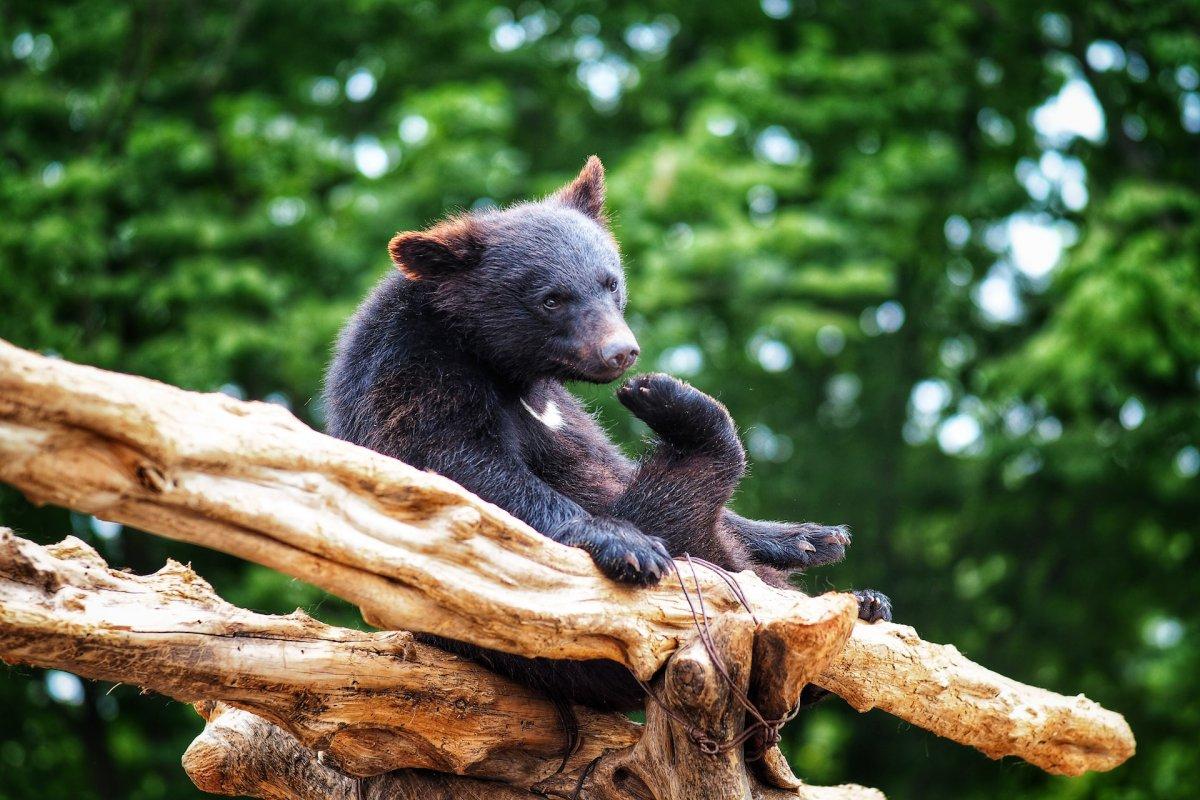
- Name: Japanese black bear
- Scientific name: Ursus thibetanus japonicus
- Conservation status:
The Japanese black bear is a subspecies of the Asian black bear. It can be found on two main islands of Japan, namely Shikoku and Honshu, and there are about 10,000 individuals in the wild. Because of these numbers and threats such as habitat destruction, overhunting, and poaching. Experts say this species will disappear within the next 100 years at the current rate.
This bear is particularly important for Japanese forests, as it heavily participates in seed dispersal.
20. Blakiston’s fish owl
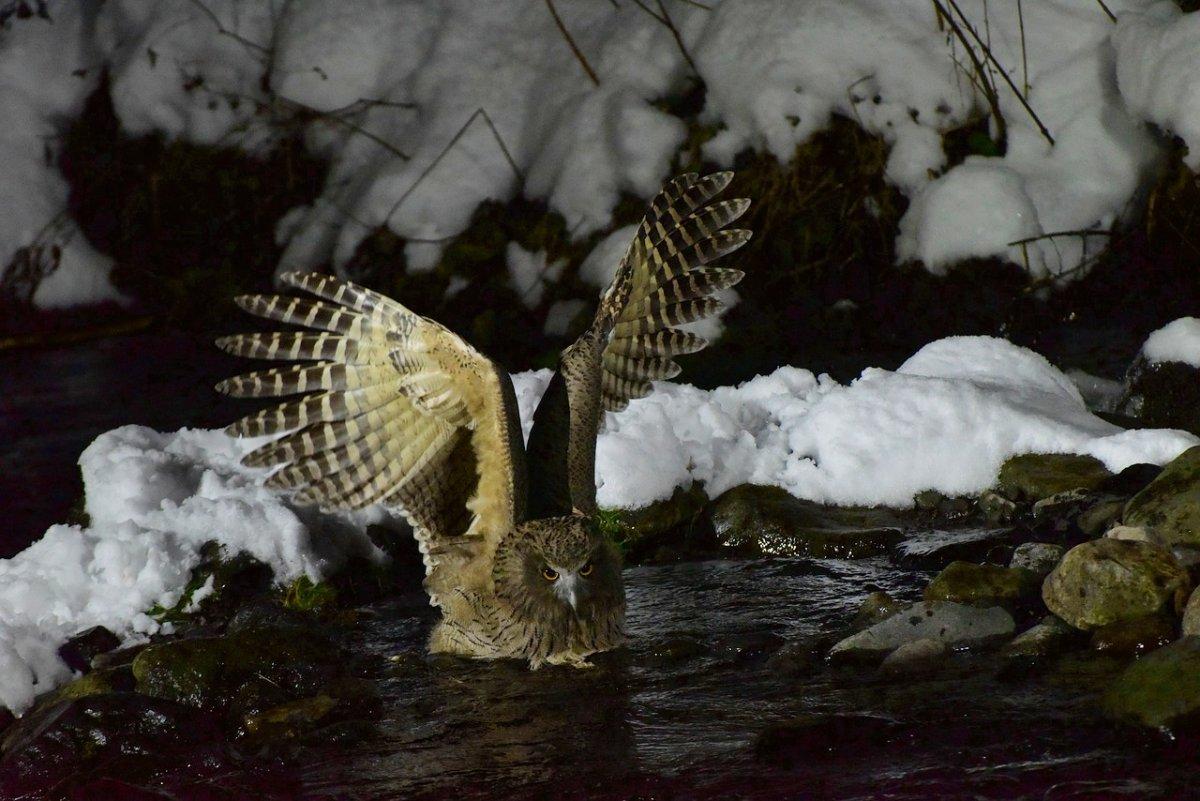
- Name: Blakiston’s fish owl
- Scientific name: Bubo blakistoni
- Conservation status:
Blakiston’s fish owl is the largest species of owl on the planet. It is a fishing owl that specializes in hunting fish, and it inhabits old forests near lakes, springs, and rivers that do not freeze in the winter.
Outside of fish, this owl feeds on crabs and frogs. It is phenomenally strong, having reportedly dragged out of the water prey of up to 3 times its body weight!
21. Bonin flying fox
- Name: Bonin flying fox
- Scientific name: Pteropus pselaphon
- Conservation status:
The Bonin flying fox, also known as the Bonin fruit bat or the Ogasawara giant bat, is a species of flying fox endemic to 4 Japanese islands. It inhabits subtropical forests and is seriously endangered by habitat loss.
This bat is herbivorous and mostly feeds on fruits: instead of consuming it entirely, it will suck out the juice and discard the rest. Believe it or not, it does not fear humans and is known to display homosexual behavior!
22. Sea otter
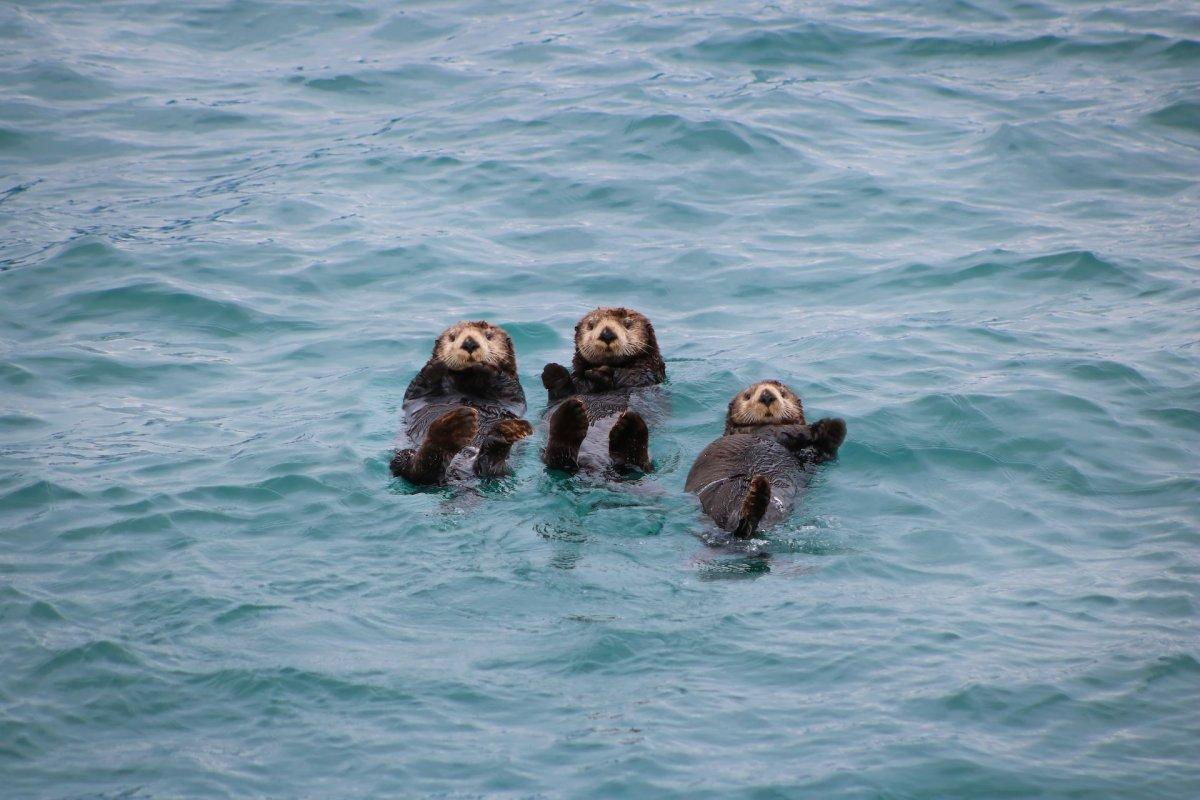
- Name: Sea otter
- Scientific name: Enhydra lutris
- Conservation status:
The sea otter is a species of marine mammal native to the coastlines of the northern and eastern North Pacific Ocean. It is the heaviest member of the weasel family, but one of the smallest marine mammals.
This otter stays near the shore, and dives to the seafloor to forage; its main preys are sea urchins, as well as crustaceans and mollusks. After intense hunting for its fur, its population went from 150,000 to 300,000 in 1741 to 1,000 to 2,000 in 1911.
23. Japanese hare
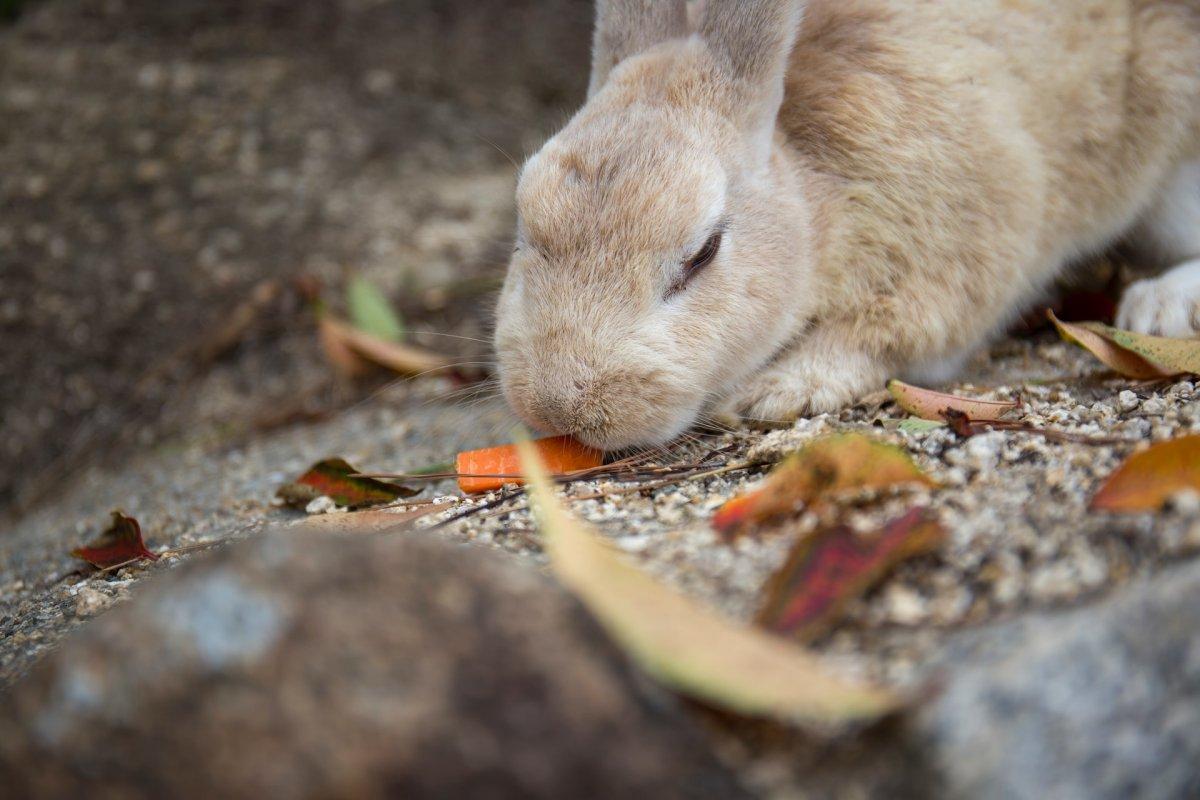
- Name: Japanese hare
- Scientific name: Lepus brachyurus
- Conservation status:
The Japanese hare is a species of hare endemic to the Japanese archipelago. It breeds within a year of birth, and several litters are born each year. In order to mate, males chase females and fight possible rivals.
Similarly to most hares and rabbits, the Japanese hare is crepuscular and very silent, unless threatened and distressed. Outside of the mating season, it is a solitary animal that feeds on vegetation.
24. Japanese spider crab
- Name: Japanese spider crab
- Scientific name: Macrocheira kaempferi
- Conservation status:
The Japanese spider crab is a species of marine crab that can be found in the waters surrounding Japan. It has the longest legs out of any arthropod and is similar to the much smaller European spider crab. It lives at depths between 50 and 600 m / 160 and 1,970 ft.
This crab is heavily fished in Japan and is considered a delicacy, and conservation programs were launched in hopes to save this species from overfishing.
25. Nomura’s jellyfish
- Name: Nomura’s jellyfish
- Scientific name: Nemopilema nomurai
- Conservation status:
Nomura’s jellyfish is the largest cnidarian in the world, and although edible, it is not considered high quality. It can grow up to 2 m / 6 ft 7 in in diameter and weigh up to 200 kg / 440 lb!
This jellyfish is particularly dangerous, as severe envenomations are more and more common nowadays. Victims feel swelling, acute pain, and itching and can even die from this jellyfish’s sting. Despite this, it has many uses, such as food (after cleaning and cooking the toxic parts), medicine, and agriculture.
26. Japanese sea lion
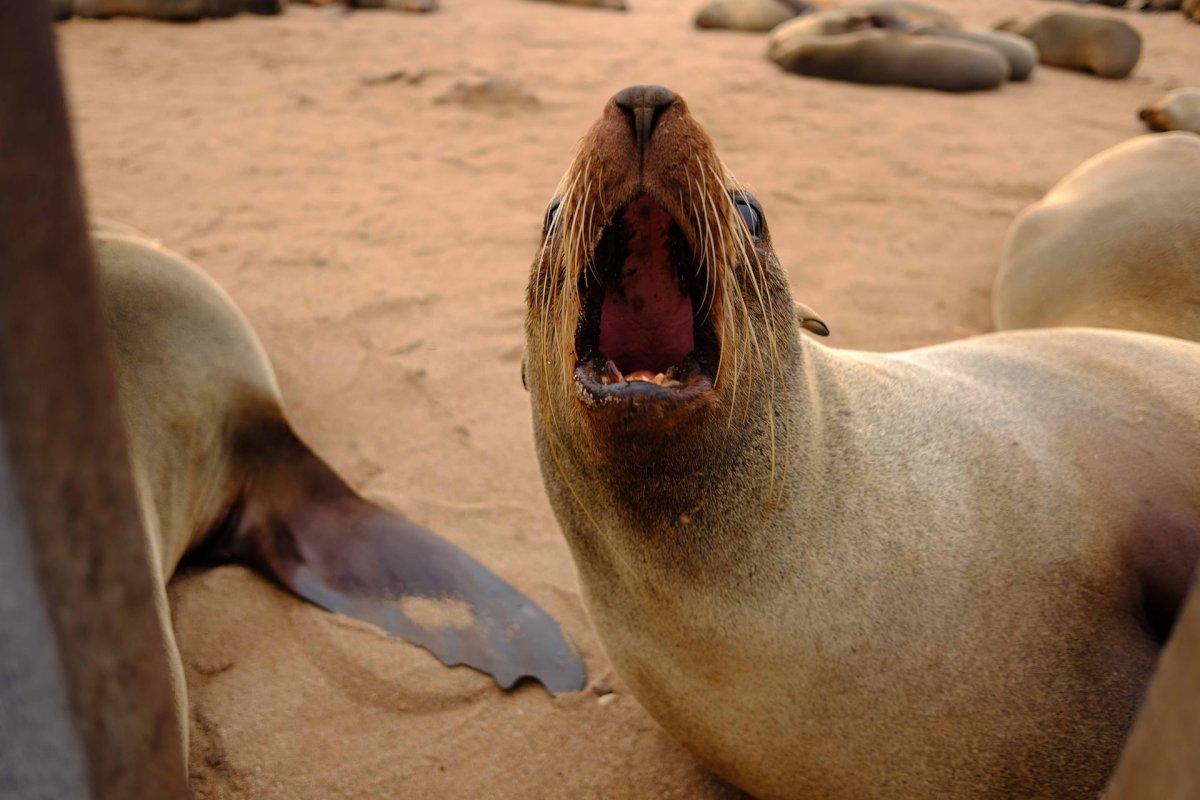
- Name: Japanese sea lion
- Scientific name: Zalophus japonicus
- Conservation status:
The Japanese sea lion was a species of aquatic mammal that disappeared during the 1970s. The main reasons for that were overhunting, habitat destruction, and its use in circuses.
This sea lion used to be found in the Sea of Japan, around the coasts of the Japanese archipelago and the Korean Peninsula. It bred on sandy beaches, but also in rocky areas, and started being hunted commercially in the 1900s.
—
So there you have them, these were my 26 native Japanese animals. I hope you enjoyed this list and that you learned something new today.
In case you want to learn more about Japanese wildlife, feel free to keep reading, as I still have lots of things to tell you about:
Endangered Animals of Japan
This is definitely the saddest part of the list, but it is very important to raise awareness. Because of this, let’s go through the list of endangered animals in Japan.
Here are the animals in danger of extinction in Japan.
- Bonin pipistrelle
- Bonin woodpigeon
- Kunimasu
- Ryukyu woodpigeon
- Bonin grosbeak
- and 2 more…
- Chinese sturgeon
- Tango stripe spined loach
- Sand tiger shark
- Yellow pond turtle
- Bowmouth guitarfish
- and 35 more…
- Banded ground gecko
- Amami Oshima frog
- Spinetail devil ray
- Japanese white crucian carp
- Yaeyama harpist frog
- and 124 more…
To see the full list of endangered species in Japan, head over to the International Union for Conservation of Nature’s Red List.
What is the National Animal of Japan?
The national animal of Japan is the Japanese macaque.
The Japanese macaque, also known as the snow monkey, is a species of monkey native to Japan. As its name suggests, it lives in the snowy areas of the country, where there is no human disturbance.
This monkey has long been part of Japanese religion, folklore, and art, as well as idioms and proverbs. Most notoriously, they are the famous 3 monkeys who warn people to “see no evil, hear no evil, and speak no evil.
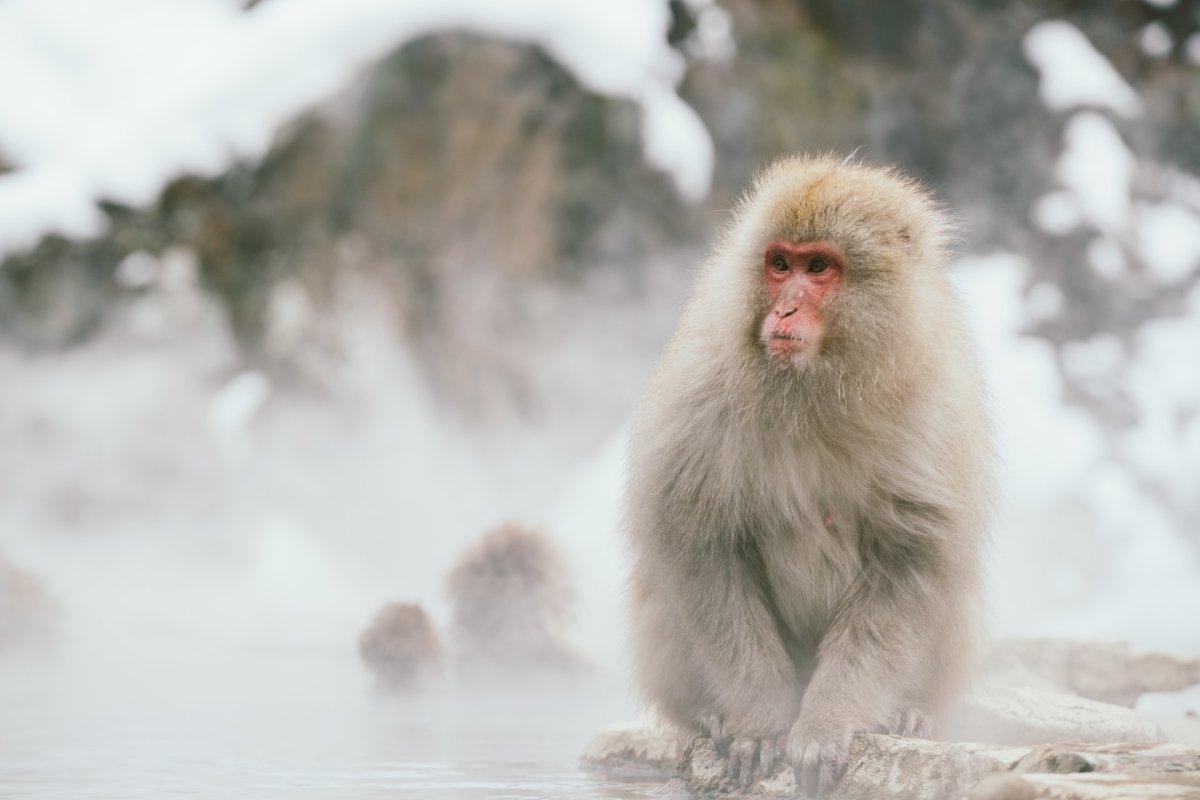
How Many Animals Native to Japan?
What is the diversity of native animals in Japan?
Let’s look at the total number of species of Chordata (mammals, birds, fishes, and reptiles).
Total number of animal species in Japan: 3,710 (7,035 in total in East Asia)
More About Animals in the World!
Loved these Japan animal facts? Want to see what animals live in other countries?
Then check out these posts:
Or click here to see ALL the facts up on the blog! Spoiler alert: there’s A LOT of them.
Share the knowledge! Click on the buttons below to share information about these famous animals in Japan with your friends, and help them learn more about the world 🙂
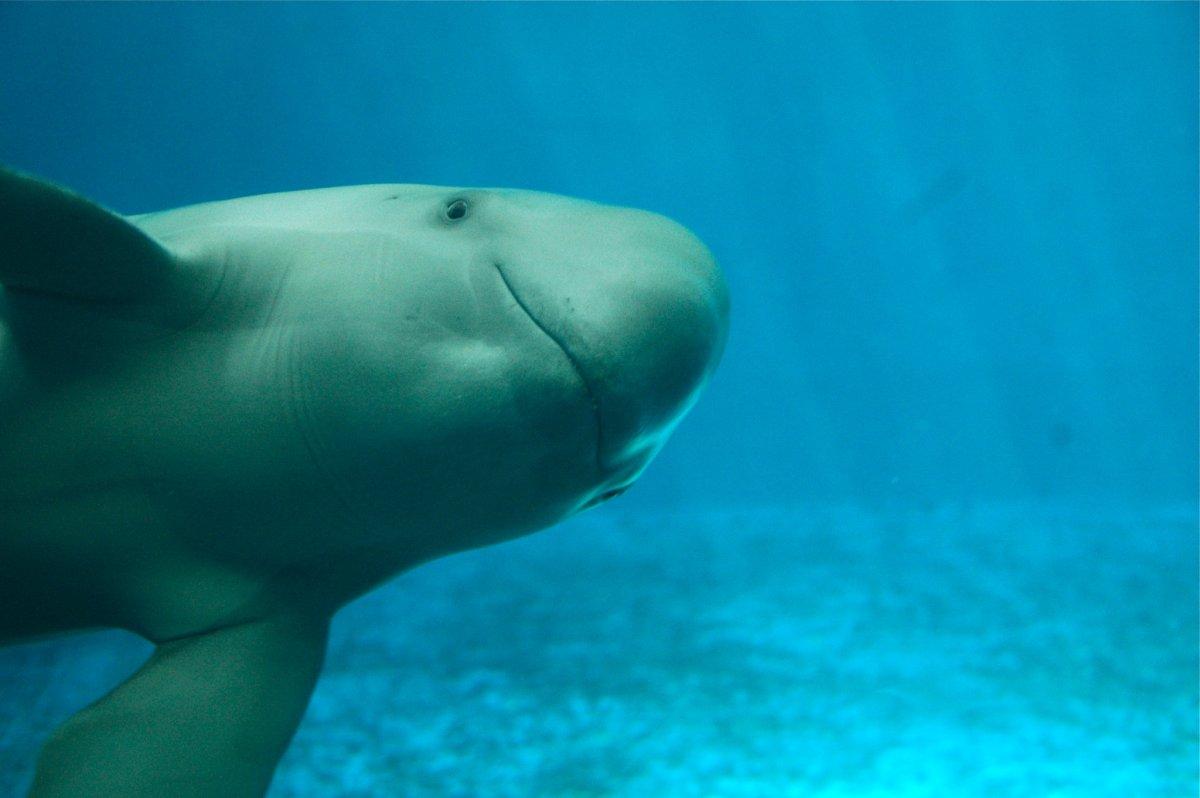
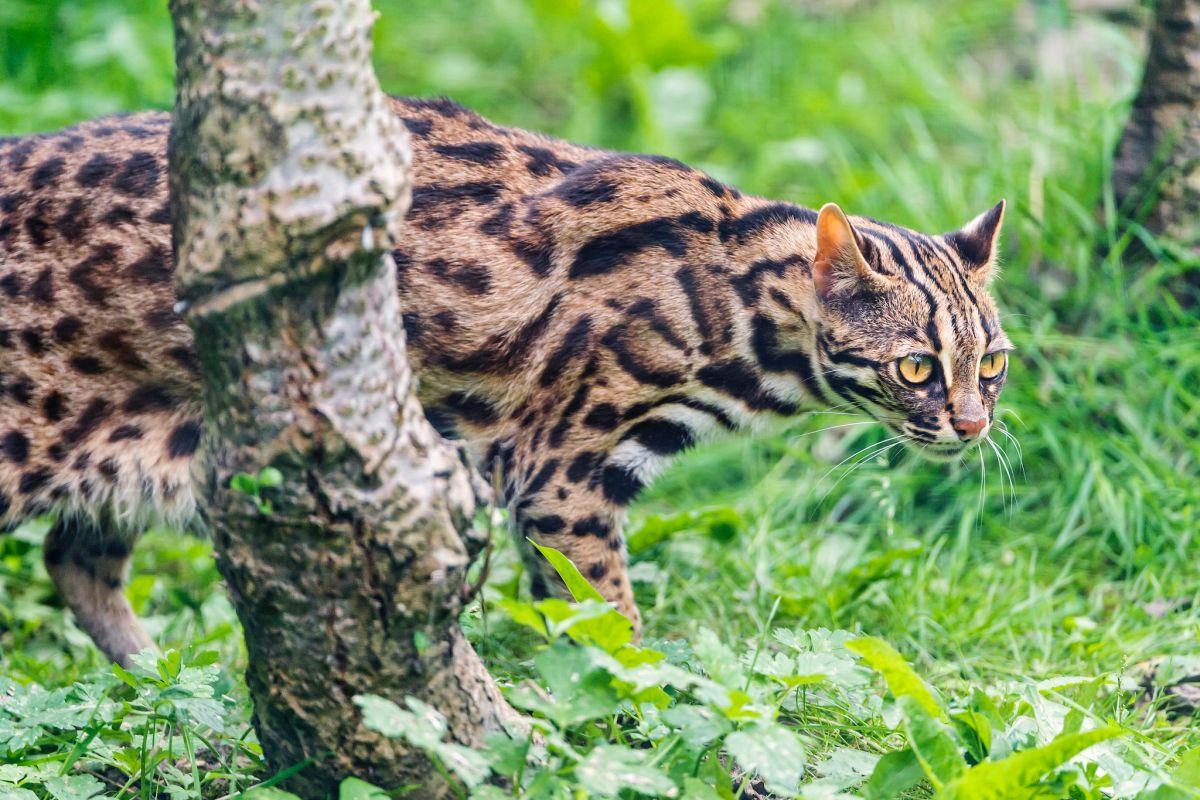
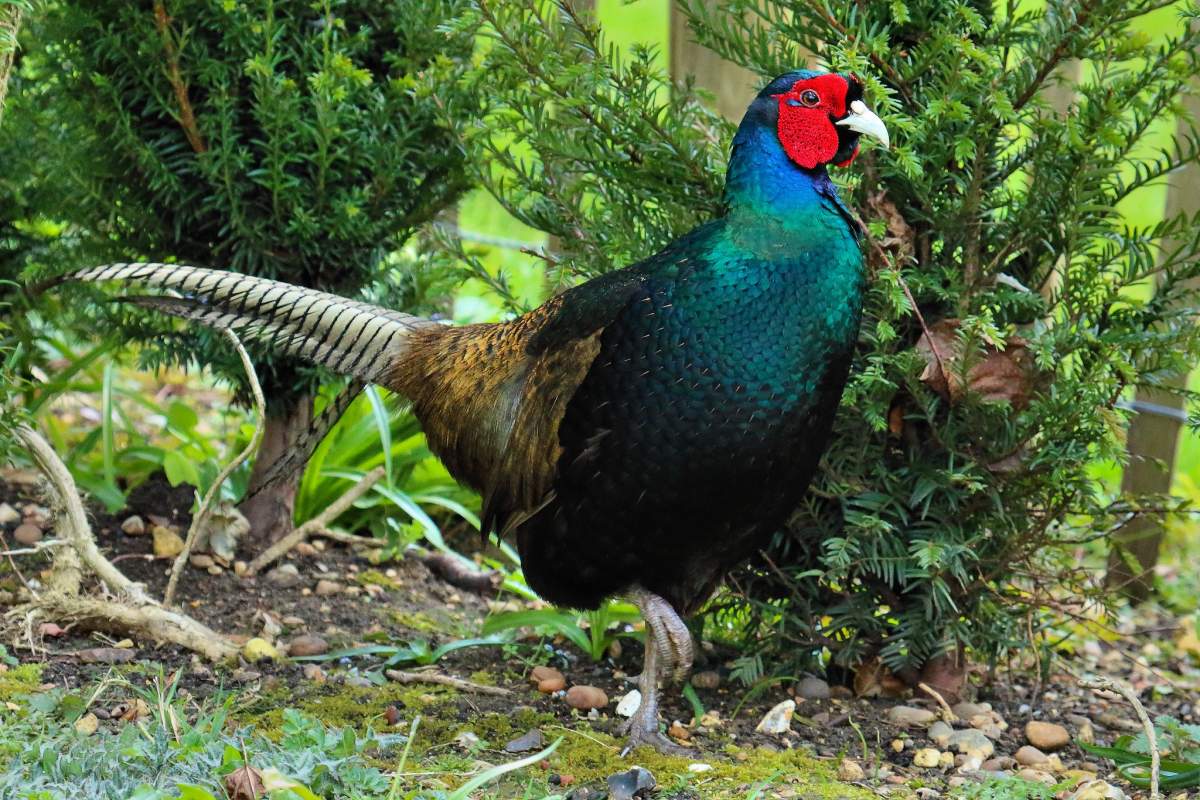
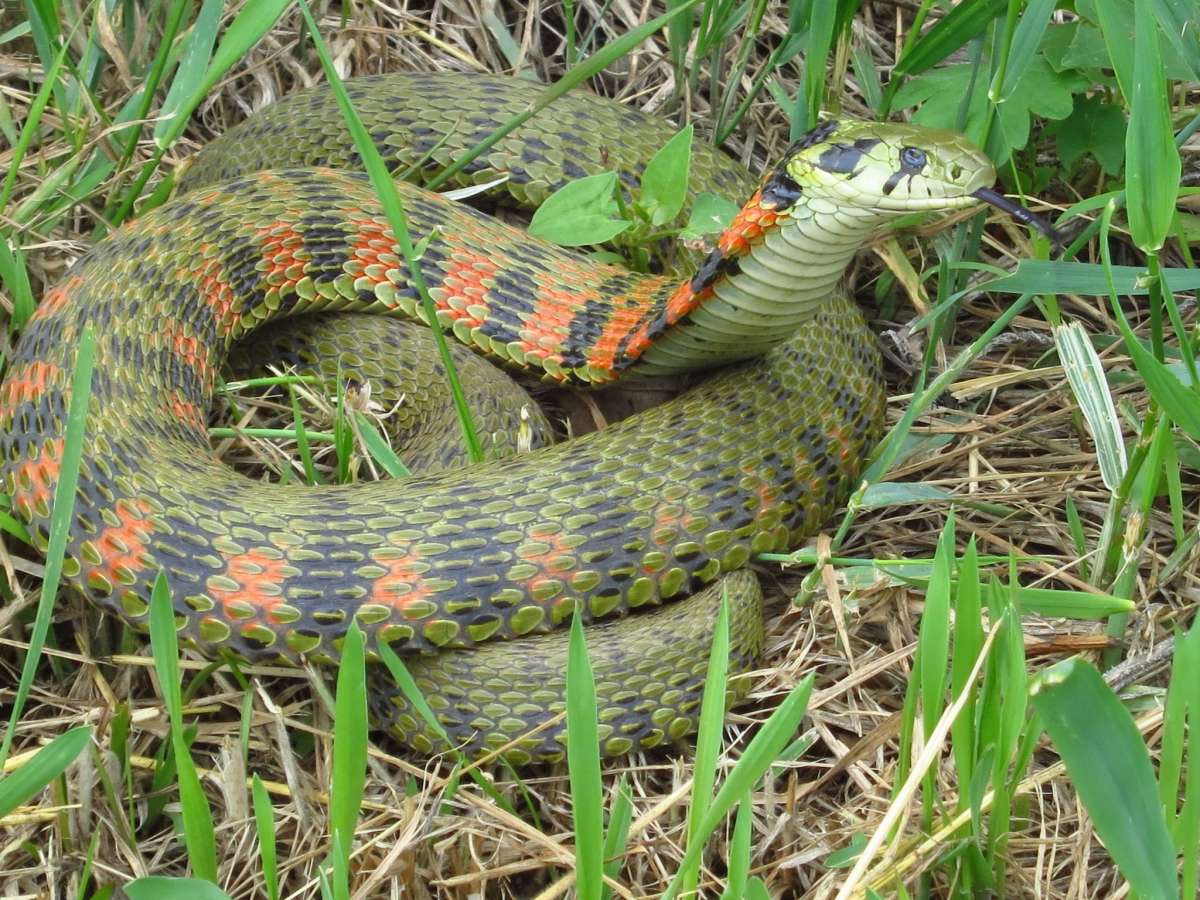
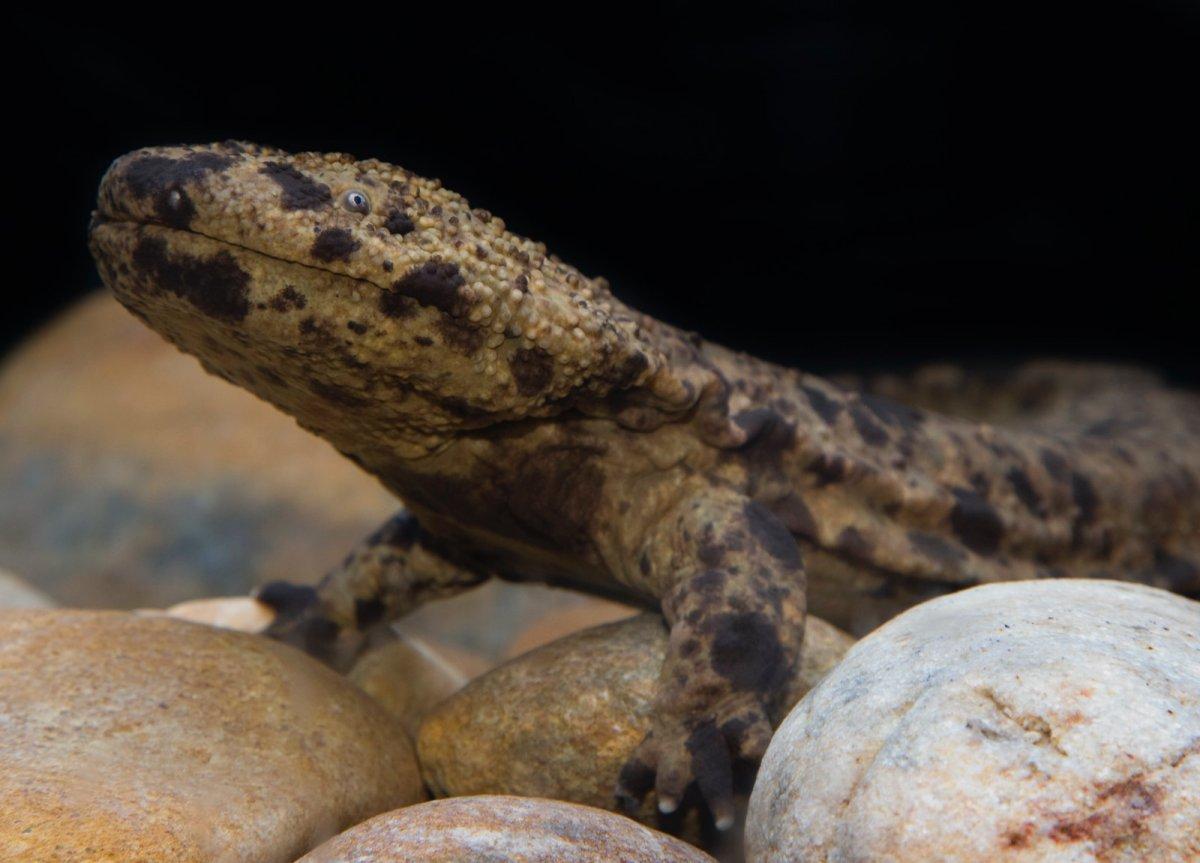
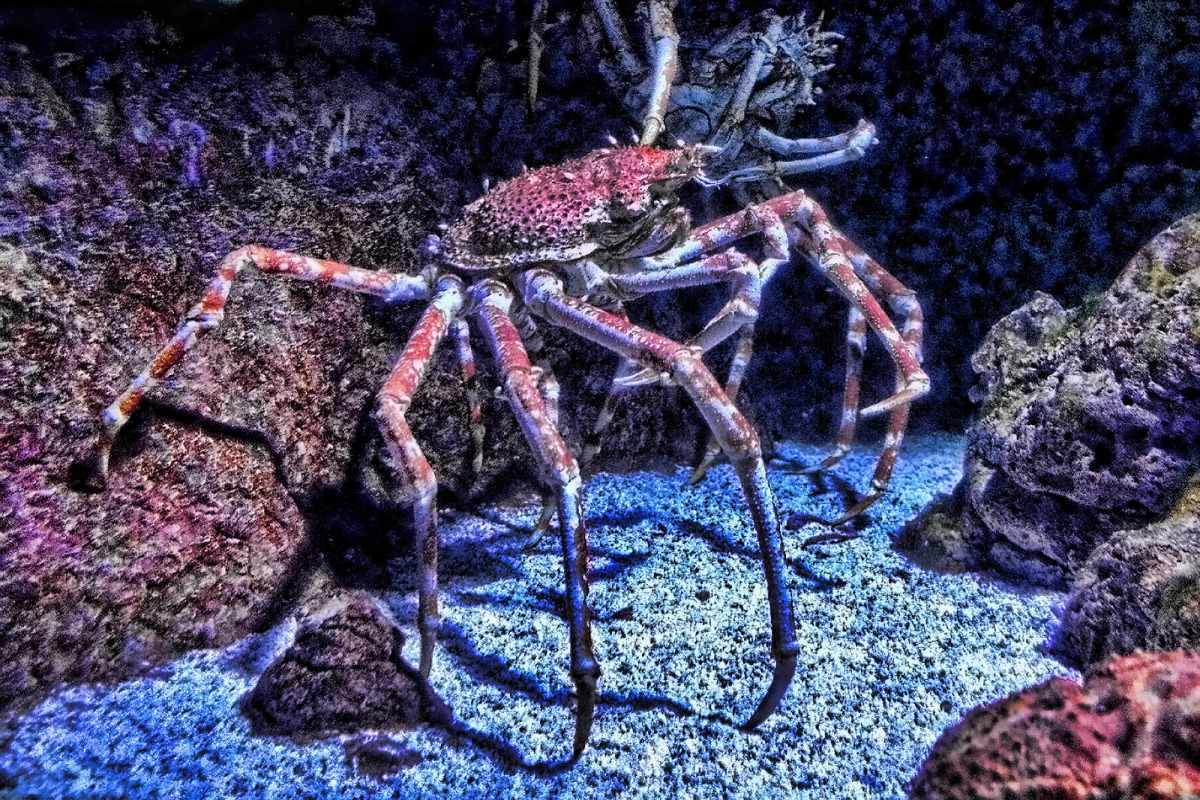
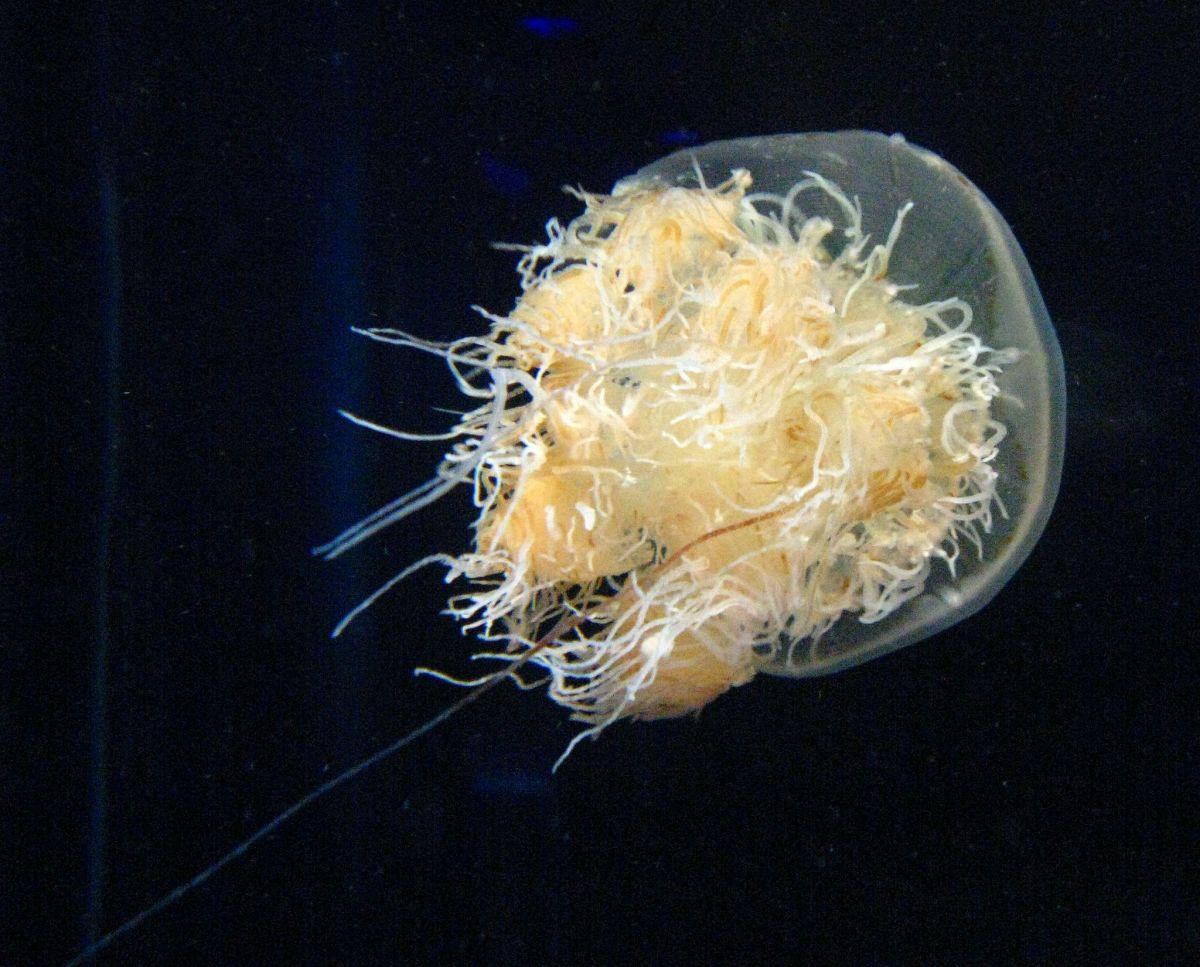

![13 Wild Animals in Vanuatu [Wildlife in Vanuatu]](https://www.kevmrc.com/wp-content/uploads/2023/01/13-wild-animals-in-vanuatu.jpg)
![50 Wild Animals in Brazil [Wildlife in Brazil]](https://www.kevmrc.com/wp-content/uploads/2022/06/50-wild-animals-in-brazil.jpg)
![21 Wild Animals in Montenegro [Wildlife in Montenegro]](https://www.kevmrc.com/wp-content/uploads/2022/06/21-wild-animals-in-montenegro.jpg)